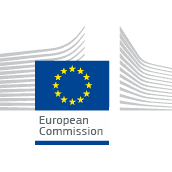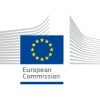
Social and economic integration of migrant women
Deadline: Jan 30, 2020
CALL EXPIRED
CALL EXPIRED
Social Innovation
Social Affaires and Inclusion
Environment
Gender Equality
Asylum, Migration and Integration Fund (AMIF)
Aid to Refugees
Education and Training
Violence
Migrants and Refugees
Mental health
Scope:
Background
Women can be crucial facilitators in the integration process. When they have children, they are often multipliers in the areas of education and employment and play an important role as agents for the transfer of values. The positive impact of migrant women’ employment on the social outcomes of their children is well documented.[1]
Still, data and research show that migrant women face multiple disadvantages in comparison with migrant men and native-born women; in particular they have lower activity and employment rates, a higher risk of poverty or social exclusion and are more likely to be in lower skilled/valued occupations.[2] This is true even though migrant women have on average a similar, or slightly better, level of education than migrant men. More adverse integration outcomes in turn can undermine their personal as well as economic independence, increase the risk of vulnerability and social isolation, as well as the risk of suffering mental health issues and low self-esteem. Women perceived as Muslim or of African descent face particular difficulties, in particular due to discrimination in access to the labour market.[3]
Therefore, it is essential to support migrant women and girls to participate in all spheres of society and to promote gender equality. An effective social integration of women in the receiving society, in particular the capacity to interact and feel at ease with the new social environment, can contribute to improved social cohesion and facilitate their integration in the labour market.
Research carried out by the OECD and evaluations of previous AMIF projects supporting migrant women allow drawing some elements that contribute to the success of projects. Availability of childcare, even if informal, during the activities enhances the participation of migrant women. Confidence building, especially for new arrivals, is key and can be provided in a variety of ways, including mentoring schemes or engaging with participants and their families. Experienced migrant women already well established in a community can play a role, for example as mentors, facilitators, or role models. Activities should support integration into the labour market of migrant women be developed to fit local labour market needs and explore less traditional job opportunities. They should also be organised in places easily accessible by migrant women, in particular by public transport. Linking work experience with training and language learning (for example half day each) is beneficial, as well as migrant women participation in activities lasting at least 6 months.
Objectives
- Support the economic and social integration of migrant women; more specifically:
- support the capacity of migrant women to interact and feel at ease in their social environment and their participation to social and political life at local level and/ or
- support migrant women moving into work and facilitate their sustainable labour market integration.
- In addition, the projects should:
- raise awareness among migrant women of their rights, including access to education and work, participation in social, economic and cultural life, protection against gender based violence and access to justice;
- raise awareness among public officials and professionals of specific needs and situation of migrant women in access to services;
- facilitate the transfer of experience, knowledge and practices within the partners of the project to develop effective actions;
- facilitate the dissemination of experience, knowledge and practices beyond the partners of the project, in particular at local and regional level, to develop more effective action targeting migrant women, including those from vulnerable groups;
- improve knowledge on how to better support the social and economic integration of migrant women.
Actions
- Activities for migrant women co-designed with them to best meet their needs, and designed in a flexible way to facilitate continued participation.[4]
- Practical trainings, workshops, mutual learning activities, mentoring schemes, peer group activities aiming at improving social and economic integration of migrant women and transferring and sharing knowledge on successful approaches to support the integration of women.
- Outreach and empowering of particularly vulnerable groups of migrant women, for example women with low educational attainment, with limited or no work experience and paying specific attention to how several forms of discrimination can reinforce each other and affect migrant women.
Such activities could include, for example:
- Specific language and orientation courses, in particular actions mixing language classes with other activities to consolidate language acquisition and improve other skills, competences or work experiences, such as vocational training or volunteering activities;
- Activities developing job-related skills and competences, preparing for entry into labour market, (e.g. by providing support in drafting CVs and preparing for a job interview, helping in developing social and professional networks), upskilling or specific actions to support that skills and qualifications of women are properly assessed, validated and recognised; labour market integration measures specifically geared towards women;
- Activities fostering confidence building and improving self-esteem, advancing social, political, cultural and/or sport participation;
- Activities mixing local and migrant population to increase knowledge and awareness;
- Activities tackling gender stereotypes and developing specific support programmes for migrant women;
- Trainings for professionals and public officials working with migrant women / involved in the elaboration and implementation of integration programmes and activities to sensitise them to issues of gender equality and particular needs of migrant women.
Outcomes
- Increased capacity of migrant women to interact and feel at ease in their social environment and to participate to social and political life at local level;
- improved preparation for entering labour market and active social participation;
- improved independence and self-esteem of migrant women;
- better level of knowledge of women rights, increasing migrant women self-confidence, opening of horizons of participating women on how they see their role in society;
- better understanding by professionals and public official working with migrant women of their specific needs and gender issues.
Further considerations applicable to this topic
- Applicants should consider and clearly detail it in their application how various policy areas and actors are to be involved. To attain the objective of this topic, it is necessary to build collaboration with and engage various actors (through a “multi-stakeholder approach”), such as local authorities and communities, private and public stakeholders, educational institutions, non-formal education actors, civil society organisations including migrant-led organisations, experienced migrant women living already in the host country for a longer time, social workers, health professionals. Migrant women – beneficiaries of projects - need to be directly involved in the design and implementation of the actions. The project proposals should specify the design/ methods of such involvement.
- Migrant women are the target group. Migrant men may also be included in some specific activities, to raise the awareness of content and purpose of the activities and support the continued participation by migrant women in the activities and enhance the understanding of Union values of equality and in particular equality between women and men, and attitudes to gender equality.[5]
- Furthermore, applicants should also consider specific attention to migrant women in a potentially vulnerable situation, including victims of gender-based violence, or who belong to a religious or ethnic minority who could face discrimination or disproportionate obstacles.
- The Commission would welcomes the diversity of large or small projects in terms of budget and number of partners. The Commission considers also valuable that migrant organisations are involved in the projects, be it as applicant, partner or in a different way.
- The Commission considers it valuable to give the possibility to organisations having less experience in the field of integration or having been confronted with this issue only recently, to benefit from the knowledge and practices developed by experienced organisations in that field. Partnerships should, where possible, include organisations having little experience on integration and organisations having experience in that area through the development of integration policies and measures.
Applicants are also invited to take note of, to avoid duplication with, and to build on projects previously funded by the EU in relation to integration. Applicants may find additional information and useful documents at:
- European Web Site on Integration; amongst other specific analysis on projects to support migrant women
- OECD (2018), Triple Disadvantage? A first overview of the integration of refugee women
- OECD-EU Settling in 2018, Indicators of Immigrant Integration (see in particular chapter 6)
- Council of Europe: Report: Migration from a gender perspective: empowering women as key actors for integration
- Funded projects under the Asylum, Migration and Integration Fund;
- Projects funded under the European Fund for the Integration of Third-Country Nationals;
- Projects funded under the EU programme for Employment and social innovation as a result of the Call for proposals VP/2016/015: Fast track integration into the labour market for third country nationals, targeting exclusively asylum seekers, refugees and their family members https://ec.europa.eu/social/main.jsp?catId=632&langId=en
- Financial Transparency System.
[1]OECD (2018), Catching Up? Country Studies on Intergenerational Mobility and Children of Immigrants.
[2]A number of factors may explain gender differences in outcomes: education level and sills, reason for migration (in particular family versus other categories), proficiency in host-country language, access to integration programmes, access to social support (employment services, childcare) and gender stereotypes. Those who come to the EU for family reasons do not always benefit from integration programmes, skills assessment, re-training and other activation measures available for other immigrants and therefore face large obstacles to overcome their social isolation and integrate in the labour market.
[3]See Section 6 of the Commission’s Staff Working Document of 15 March 2019 on countering racism, xenophobia in the EU. In addition, see also ENAR (2016), 'Forgotten women: the impact of Islamophobia on Muslim women' and “Muslim by default or religious discrimination? Results from a cross-national field experiment on hiring discrimination”
[4]For example, activities organised at times where children are in a childcare setting or at school, or providing a possibility to bring the children and provide informal care arrangements (for example in an adjacent room) during the activities. The geographical proximity of the place where the activities of projects take place and the places women live/ attend should be taken into account.
[5]In particular, attitudes towards women’s economic independence and involvement on the labour market, which depend on balance / involvement of men in domestic and care responsibilities.
Public link: Only for registered users
Get Access to the 1st Network for European Cooperation
Log In
or
Create an account
to see this content
1
Up2Europe Experts
on This Call
Expert - Project Development & EU Funding Consultant in participatory processes
MY SUCCESSFUL EXPERIENCES IN COMMUNITY GRANTS


 EC - DG - Asylum, Migration and Integration Fund (AMIF)
EC - DG - Asylum, Migration and Integration Fund (AMIF)
Please Log In to See This Section